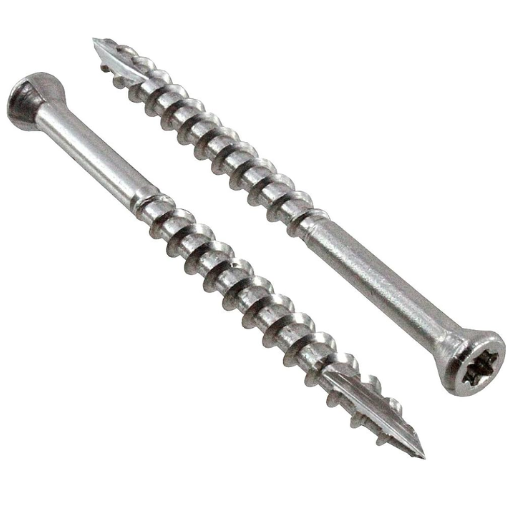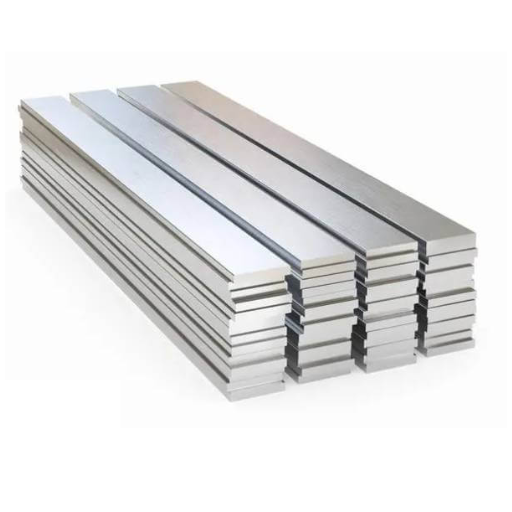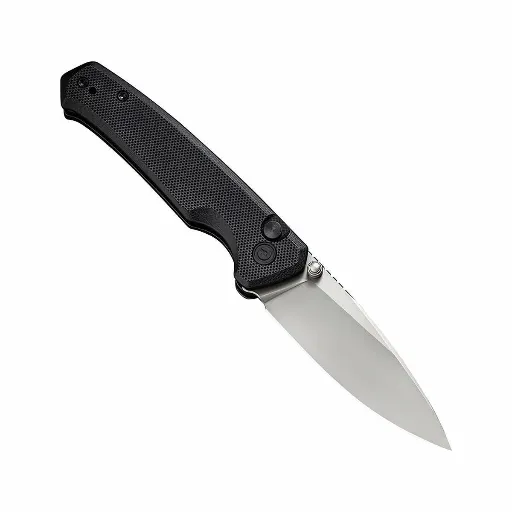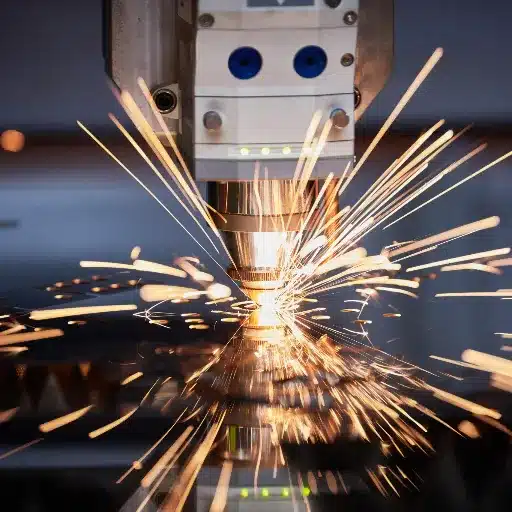Known for its flexible composition and widespread use, 305 stainless steel is exceptionally corrosion-resistant and boasts impressive versatility. It is beneficial in cases where materials are exposed to severely harsh conditions, such as marine or chemical environments. This blog post will dive deeper into what makes 305 stainless steel unique, its composition, and its uses in various industries. We will also touch upon the benefits and limitations of it and compare it with other stainless steel grades for a more thorough analysis. By the end of this article, you will learn why 305 stainless steel is such a widely accepted option for engineers and manufacturers all over the globe.
What is 305 Stainless Steel, and How is it Different from 304?

Stainless steel 305 is an austenitic stainless steel alloy best known for its high nickel content that gives it exceptional formability and corrosion resistance. Unlike 316 stainless steel, 305 has even more nickel and less work-hardening rate, making it better suited for highly cold-wworked processes like deep drawing or stamping. While 304 is popular for its wide application range and cheaper cost, 305 is used more often in industries that require high ductility and low magnetism. While 305 and 304 alloys have the same resistance to oxidation and durability, 305’s distinct features are most ideal for specialized manufacturing processes.
Composition Differences Between 304 and 305
The most notable difference between the compositions of 304 and 305 stainless steels is the content of nickel. 305 has a much higher concentration of nickel than 304, which makes it easier to form and greatly decreases its likelihood of being magnetized through cold working. While both grades contain similar levels of chromium, this variation in nickel allows 305 to achieve better performance in applications requiring extensive shaping. These differences may seem minor, but they directly impact how each alloy is utilized across multiple industries.
Applications of 305 Stainless Steel
305 stainless steel is incredibly preferred in industries requiring reasonable manipulation and superior corrosion resistance. The high nickel content level makes it favorable for magnetically cold worked environments. Some applications include:
- Deep Drawing Applications
- Due to its greatly enhanced ability to be deformed, 305 stainless steel is suitable for deep-drawn parts like sinks, complex pots, kitchen utensils, and any other cookware that requires complicated shapes.
- Food and Beverage Equipment
- The stainless steel 305 alloys’ resistance to corrosion indeed guarantees safety when food is being handled or stored. They are useful in manufacturing food processing machinery and containers, therefore making them safe for food-grade usage.
- Automotive and Aerospace Components
- Of the cold-worked alloy strength and non-magnetic properties, 305 stainless steel is used in small precision parts such as fasteners, springs, and clips in automobiles and aerospace applications.
- Medical and Surgical Instruments
- The combination of non-magnetic and excellent hygienic properties makes surgical and medical tools and devices use 305 stainless steel.
- Architecture And Decoration Applications
- Stainless steel 305 is used for decorative panels, trim, and fixtures due to its appealing surface finish and resistance to stain and rust.
Key Features Supporting These Applications:
- Corrosion Resistance: Resistant because of chromium’s 18% to 20% content.
- Nickel Content: Greater formability and lesser magnetism after cold working is due to higher 10% to 13% nickel content.
- Tensile Strength: Stain steel 305 is strong enough for many intricate applications with a tensile strength of 515 MPa.
- Non-Magnetic Properties: Retains low magnetic permeability, making applications that require non-magnetised materials possible.
These attributes make the stainless steel versatile and are the reasons for its growing acceptance throughout different industries. Always consult material specifications for the exact requirements to ensure the alloy meets application needs.
Comparing Corrosion Resistance and Good Oxidation Resistance
305 stainless steel’s corrosion and oxidation resistance complement each other and can be viewed together. 304 stainless steel’s corrosion resistance protects the material from rusting or degrading over time in moist or chemically concentrated environments. Oxidation resistance, however, is directly related to the material’s structural integrity at elevated temperatures. In this case, exposure to oxygen may cause scaling or surface layer damage that denatures the material. Although 305 stainless steel has excellent corrosion resistance under standard conditions, its good oxidation resistance makes it easier to use in higher-temperature applications. This allows for more versatility depending on the environmental conditions of operation.
Exploring the Mechanical Properties of 305 Stainless Steel

The rest of the world regards 305 stainless steel as more desirable due to its mechanical properties. This alloy is popular for its superb ductility and formability, probably due to its high allowance of nickel, which enables more profound drawing and shaping than other stainless steel. The tensile strength usually is between 515 – 730 MPa, and the yield strength is approximately 205 MPa. In addition, the elongation at break of ~40% signifies high flexibility and thus enables use in highly contoured or sculpted parts.
Another essential feature is hardness, which is also a mechanical property. The 305 stainless steel has a Brinell Hardness of about 147 and a Rockwell Hardness (B scale) of 80, meaning it is both durable and reasonably easy to work with. Considering such properties and superb oxidation resistance results in 305 stainless steel performing well structurally and aesthetically under demanding environments, such as high temperatures and corrosion. This material is distinguished as reliable and versatile because of its balance of strength and malleability.
Understanding Typical Mechanical Properties
According to my research, 305 stainless steel has great mechanical properties suitable for many uses. It is both strong and formable, with a high tensile strength and good elongation. Furthermore, its low work-hardening rate facilitates easier fabrication processes such as deep drawing and forming. Combined with its superior corrosion resistance, these traits make it an ideal candidate for industries requiring both durability and aesthetics.
The Impact of Nickel Content on Strength
The addition of nickel is essential for increasing the strength of stainless steel. As far as I know, nickel increases the steel’s ductility and toughness, so it can better resist cracking under stress. Austenitized nickel stabilizes the structure of alloys and increases tensile and yield strength. A good example is 304 and 316 stainless steels with nickel-containing alloys, which have excellent mechanical performance due to their balanced composition. In technical documents, parameters yield 200-400 MPa (depending on grade) and tensile strength near 500-700 MPa for austenitic stainless steels with higher nickel percentages. This composition has guaranteed rigid and flexible features that are great for demanding conditions.
Analyzing the Physical Properties of 305 Stainless Steel

305 stainless steel is a type of austenitic stainless steel with a slightly increased nickel content than 304. The presence of extra nickel improves the alloy’s corrosion resistance and ductility. Its mechanical properties include a yield tensile strength of approximately 200 to 300MPa and a tensile strength value of around 500-700MPa. Because of the extra nickel, 305 stainless steel can be easily formed, making it ideal for deep drawing and other complex fabrication processes. It also provides excellent oxidation resistance and structural stability at room and elevated temperatures, ensuring reliable application performance.
Density and Work Hardening Rate
The density of 305 stainless steel is about 8.03 g/cm³, which aligns with other austenitic stainless steels. Regarding the work hardening rate, this alloy has a lower work hardening rate than other grades, like 304 stainless steel. This trait owing to higher nickel content makes this alloy easier to form, and shape through deep drawing and other extensive fabrication processes without toughening that much.
Thermal Expansion and Oxidation Resistance
Between 20 and 200 degrees Celsius, 305 stainless steel has a coefficient of thermal expansion of 17.2 microstrains per degree Celsius, which most austenitic stainless steels have. Such high thermal expansion must be considered for situations with strict tolerance requirements, where temperatures are moderated.
305 stainless steel has good resistance to oxidation during both continuous and intermittent high temperatures. Withstands oxidation in air at temperatures of 870 degrees Celsius during constant use and up to 925 degrees Celsius for intermittent exposure. This type of resistance is caused by the stable chromium oxide layer formed over the surface, which protects the material from further oxidative degradation. On the other hand, with time, they can weaken within prolonged exposure or aggressive atmospheres.
The Nominal Composition of 305 Stainless Steel

The common elements found in 305 stainless steel are as follows:
- Chromium (Cr): 17.00-19.00%
- Nickel (Ni): 10.50-13.00%
- Carbon (C): up to 0.12%
- Manganese (Mn): up to 2.00%
- Silicon (Si): up to 1.00%
- Phosphorus (P): up to 0.045%
- Sulfur (S): up to 0.03%
- Iron (Fe): Remaining percentage
Combining these elements allows the alloy to resist corrosion, sustain strength, and function effectively at elevated temperatures. Keep in mind that slight differences could exist due to the supplier.
Role of Chromium and Nickel in the Alloy
Chromium helps improve the steel’s corrosion resistance by combining chromium with 305 stainless steel, forming a passive oxide layer that thwarts rust and deterioration. Nickel increases the alloy’s strength and ability to withstand high-temperature performance. Also, nickel enhances the material’s ductility and toughness, making it machinable without losing structural integrity. As a result, these elements provide an alloy with balanced durability and versatility for different purposes.
Influence of Alloying Elements on Corrosion Resistance
The corrosion resistance of 305 stainless steel is greatly affected by its alloying elements, mainly chromium and nickel. Chromium, in the range of 17 to 19%, ensures an excessive and self-fixing passive oxide layer is formed. This layer protects the material from undergoing oxidation and forms of corrosion like pitting and crevice corrosion. Nickel, in the range of 8 to 10.5%, helps further resist stress corrosion cracking while aiding in maintaining the austenitic microstructure critical for operational performance in hostile environments. Other minor elements like manganese and silicon also improve corrosion resistance by enhancing the passivation of the oxide layer. Collectively, these alloying constituents have provided more barriers in a spiral corrosive environment, which aids in confirming the 305 stainless steel grade’s industrial environmental corrosive resistance capabilities.
How Austenitic Stainless Steel Grades Like 305 are Used in Industries

Austenitic stainless steel grades like 305 have gained usage in various industries because of their formability, durability, and, most significantly, corrosion resistance. It is used extensively to fabricate kitchen utensils, automobile parts, chemical machinery, and medical instruments that face severe environmental conditions. In addition, these types of steel are suitable for electrical and aerospace applications because of their nonmagnetic characteristics. The flexibility 305 stainless steel offers enables its prolonged usage in harsh and corrosive industrial environments.
Applications in the Aerospace Sector
Like 305, austenitic stainless steels are well known for their mechanical properties and are extensively used in the aerospace industry. High-altitude environmental stressors like pressure, temperature, and mechanical loads put stainless steel 305 to the test. A wide range of components, including structural parts, fasteners, and other components that aid in aviation, are made using this. A delicate high-technology electronic or navigation device can be affected by nonmagnetic elements, making it vital for the 305 to be sensitive.
Ensuring tight mechanical loads are put into ease, the technical specifications that help this stainless steel to be used internationally in aerospace are a yield strength of 205 MPA minimum, tensile strength of 515 MPA minimum, and elongation capacity of 40% in 2 inches. Oxidation below 1600F (871 C), fantastic weldability aid, and nonstress corrosion cracking make 305-used designs complex yet light. 305 stainless steel excels over all other metals in durability, deformation, and high-temperature welding, making the aerospace industry prefer it.
Usage of Stainless Steel Screws and Fasteners
Screws and fasteners composed of stainless steel 305 are excellent in the aerospace industry because of their strength, corrosion resistance, as well as their durability. In my experience, these withstand extreme external forces such as high-pressure and temperature fluctuations, maintaining integrity in critical environments. 305 stainless steel fasteners are also the best choice for advanced systems because the material is non-magnetic and will not interfere with sensitive equipment.
Some other key technical parameters of a 305 stainless steel fastener include a minimum yield strength of 205 MPa, a minimum tensile strength of 515 Mpa, and an elongation capacity of 40% within 2 inches. Flexibility in these fasteners is essential because they must withstand considerable mechanical loads. Coupled with strong weldability and resistance to stress corrosion, cracking facilitates manufacturing, and their ability to work in complicated assemblies ensures compatibility. All of these features along with reliable oxidation resistance below 1600°F (871°C) makes these fasteners indispensable for aerospace engineers.
Benefits of Work Hardening in Industrial Applications
Work hardening, or strain hardening, provides multiple benefits in an industrial context. Taking metal work to such levels that deformation exceeds their yield point increases the strength and hardness of metals, making them less likely to be worn or deformed under heavy loads. This is particularly useful for materials like stainless steel as it increases their strength while preserving their ability to withstand corrosion. In addition, work-hardened materials can increase the durability of components and decrease the amount of replacements required while enhancing performance in tough conditions.
References
- Stainless Steel – Grade 305 (UNS S30500) – Provides detailed mechanical properties and characteristics of 305 stainless steel.
- Stainless Steel Type 305 – Discusses the corrosion resistance and non-magnetic properties of 305 stainless steel.
- 305 Stainless Steel Material Property Data Sheet: This sheet offers insights into the work and strain hardening rate and formability of 305 stainless steel.
Frequently Asked Questions (FAQ)
Q: What is 305 stainless steel, and how does it differ from 304 stainless steel?
A: 305 stainless steel, known as UNS S30500, is a grade of stainless steel that offers improved formability over 304 stainless steel due to its higher nickel content. While both are austenitic series stainless, the 305 grade is well-suited for applications requiring extensive forming operations.
Q: How does 305 stainless steel compare to 316 stainless steel in corrosion resistance?
A: 305 stainless steel has good corrosion resistance, but 316 stainless steel, also known as type 316, offers superior resistance, especially in environments containing chlorides or acids. Adding molybdenum to 316 stainless steel enhances its corrosion resistance compared to 305 grade.
Q: What are the typical applications of 305 stainless steel strips?
A: 305 stainless steel strip is often used in applications that require extensive cold forming, such as in the production of custom sheet needs, blanking, and the manufacturing of various steel products. Its excellent formability makes it ideal for these purposes.
Q: Can 305 stainless steel be welded effectively?
A: Yes, 305 stainless steel can be welded using standard techniques. However, proper welding procedures must be followed to prevent issues such as warping or corrosion. Using the correct electrode is crucial for achieving a strong weld.
Q: Is annealing necessary for 305 stainless steel after forming?
A: Annealing can benefit 305 stainless steel after extensive forming operations to relieve stresses and enhance ductility. This process helps restore the material’s properties and improves its performance in subsequent applications.
Q: How does the formability of 305 stainless steel benefit manufacturers?
A: 305 stainless steel’s excellent formability allows manufacturers to create complex shapes without cracking or breaking, which is crucial for industries that require precision and durability in their steel products. This property makes 305 grade a cost-effective choice for many applications.
Q: Why is 305 stainless steel considered cost-effective compared to other grades of stainless steel?
A: 305 stainless steel is often considered cost-effective due to its balance of good corrosion resistance, excellent formability, and lower cost compared to higher alloyed grades like 316 stainless steel. This makes it a popular choice for many commercial and industrial applications.
Q: How does 305 stainless steel perform in power generation applications?
A: In power generation, 305 stainless steel’s corrosion resistance and formability make it suitable for various components. Although it doesn’t match the high-end resistance of 316-grade stainless steel, it remains a viable option for non-critical applications within the sector.
Q: What information in the alloy composition creates the 305 stainless steel’s unique properties?
A: 305 stainless steel’s unique properties are largely due to its higher nickel content, which improves formability, and its balanced chromium content, which provides corrosion resistance. This composition results in a grade of stainless steel that is both versatile and durable.







